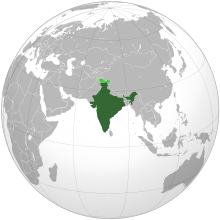Playboy Magazine And AQ Khan: Incredible Credibility? – Analysis
By IPCS
By Alankrita Sinha
There is enough evidence internationally that adds credence to the notoriety of the AQ Khan network and its legacy of nuclear proliferation. However, along with facts, fiction too finds its way into this narrative from time to time. The latest in this case is a compelling piece by Joshua Pollack, in none other than Playboy magazine, insinuating that the fourth customer of the AQ Khan proliferation network was India. Pollack rests his case on three major factors. The first deals with the similarity in centrifuges used by India and those engineered by Khan. The second evidence is the case against certain entities that had been accused and later indicted for contravening South Africa’s non-proliferation legislation. The third being AQ Khan ‘personality’ itself which would have shown no remorse in being treacherous to Pakistan in face of personal gains. This article explores all the evidences provided by Pollack while seeking to answer one central question: How credible is the evidence provided by Pollack in the face of facts, little known publicly as they might be?
Pollack suggests that the centrifuges used by India for uranium enrichment are so similar to the design of the G-2 centrifuges of URENCO, stolen and used by Khan for Pakistan’s P-2 centrifuge, that “despite minor changes, the design is recognizable to the trained eye.” Moreover, he emphasizes how India’s late entry into the development of uranium centrifuges in the 1980s can be explained through the lack of indigenous capability in engineering one, and thereby points to the AQ Khan network in terms of providing assistance. However he desists from answering a cardinal question regarding the level of detail which can pin his case.

There are many distinct levels at which his argument falters. At one level, similarities in centrifuge design is a necessary but not sufficient evidence at hand considering the fact that information regarding India’s centrifuge program has hardly any access points in the public domain. As Professor R Rajaraman critiques, one may like to hence question the source of Pollack’s ‘knowledge’ about the design and detail of India’s uranium centrifuges. He can very well speculate, but he cannot be certain. Another fact which he misses out is the contingency of India’s effort at uranium-enrichment and its interest in nuclear fuelled submarines. India’s nuclear weapons program was plutonium based and hence did not require highly enriched uranium (HEU). The need for HEU only surfaced in the 1980s because it was at that time that India became interested in the idea of submarine reactors. In fact, according to David Albright and Susan Basu, only in 1985 did India begin to receive manufacturing equipment and materials from German, Swiss, and French companies for its Rare Materials Project (RMP) hailed as India’s primary centrifuge enrichment facility. This brings us to Pollack’s second evidence.
According to Joshua Pollack, it is in this interest of securing manufacturing equipment and materials for uranium enrichment that India actually came in touch with the AQ Khan network. For the purpose of explicating his case further, Pollack points to the South African court’s documents which directed an investigation into two corporate entities registered in South Africa – Krisch Engineering Co (Pty) Ltd and Tradefin Engineering CC. It was during this investigation that a German citizen named Gerhard Wisser and a Swiss citizen named Daniel Geiges were indicted for supplying nuclear equipment to Pakistan between 1986 and 1995.
In fact, both Wisser and Geiges were indicted on ten charges, six relating to proliferating to Libya and four to Pakistan. Please note, none of the charges revealed anything about a link to India. Why then does Pollack insist that India was involved? His argument is predicated on the raised probability of proliferation after Wisser commissioned the production of flow-meter units designed for a hexafluoride application as is used by India. Even Albright and Basu concede that this raises a possibility of an Indian link but does not confirm it. More importantly, even the South African courts could not prove it.
Last but not the least, Pollack uses AQ Khan’s personality as an enabling factor in order to make an argument for his ‘treachery’ towards Pakistan. According to Pollack, Khan’s biography is as important as the man himself because it highlights his need for personal recognition and glorification. However, amongst scores of instances illuminating Khan’s ‘need’, for example his endeavour to sponsor higher education in Pakistan, none of these personal traits relate directly to his role in proliferating to India. In fact, Pollack’s final clue is nothing more than a personal judgement in order to fill the gaps within his argument which cannot be explained by anything credible.
Pollack’s argument fails to link facts and contingencies which guide behaviour to the circumstantial evidence which he so compellingly provides. Moreover, his argument presupposes that Khan had a power of unilaterally deciding action, without giving the Indian state any agency in this regard. But then again, one must also remember, the choice of the medium itself gives much leeway to Pollack to escape a far more severe criticism.
Alankrita Sinha
Research Officer, IPCS
email: [email protected]
